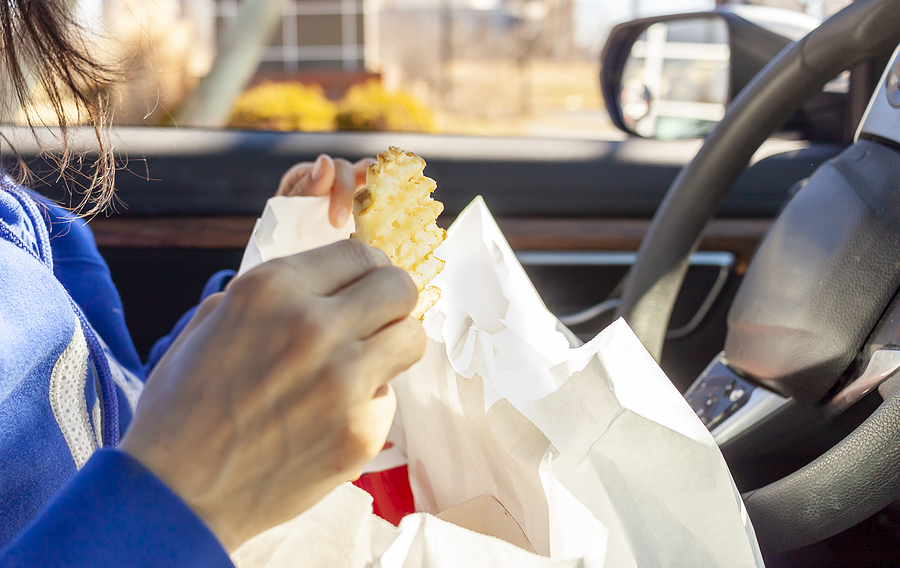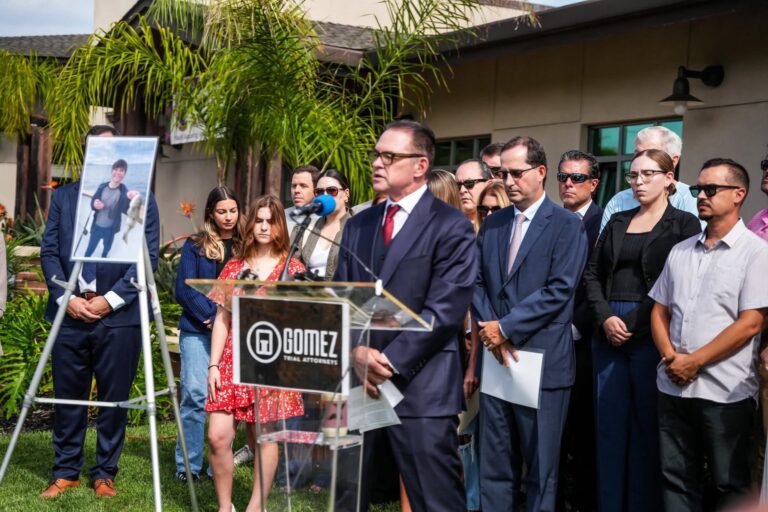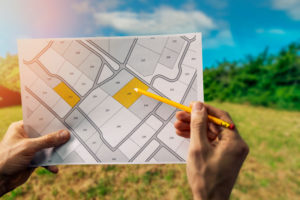 Every year, hundreds of people die in San Diego vehicle accidents, and many more incur serious injuries. If you have recently been involved in a San Diego car accident, you might be uncertain about the cause of the accident, especially if law enforcement is still investigating it. The cause of a car accident ultimately determines who is financially liable for property damage and injuries related to the accident.
Every year, hundreds of people die in San Diego vehicle accidents, and many more incur serious injuries. If you have recently been involved in a San Diego car accident, you might be uncertain about the cause of the accident, especially if law enforcement is still investigating it. The cause of a car accident ultimately determines who is financially liable for property damage and injuries related to the accident.
Sometimes the cause of an accident is obvious, and formal investigation only confirms what those involved already know. In other cases, an insurance company investigation or a law firm’s investigation reveals technical facts, and other causes emerge. Almost all car accidents are preventable, and they occur because of someone’s negligence.
Until you have the chance to meet with an attorney to discuss your San Diego car accident, read the below overview of the reasons traffic accidents occur in San Diego. The California Highway Patrol (CHP) or San Diego Police may determine the primary cause of a car accident. However, more than one cause often contributes to a car accident.
For example, a speeding driver can fail to yield and cause a car accident, making speeding and failure to yield contributing causes to the accident. The following seven reasons for car accidents in San Diego could include one or more causes for your San Diego car accident.
1. Distracted Driving
According to the National Highway Traffic Safety Administration (NHTSA), several thousand people lose their lives each year because of distracted driving; tens of thousands suffer severe injuries. San Diego’s traffic and complex road infrastructure make distracted driving especially dangerous and one of the leading causes of car accidents throughout San Diego County. While NHTSA and other government agencies that study distracted driving cannot pinpoint the exact reason why certain driving behaviors happen more in other places than others, traffic conditions strongly correlate with distracted driving.
Traffic in Southern California is notoriously heavy and often congested within San Diego. In fact, San Diego recently ranked #12 in the most traffic-congested cities in the United States. Drivers who are stuck in San Diego traffic often become impatient and turn to their cell phones and participate in other behaviors that distract them from driving and sometimes lead to dangerous and even fatal car accidents.
The time delays caused by congested roads make cell phone use seem necessary in certain cases. Drivers get stuck in traffic or are running behind because of slow traffic, so they use their phones to call or text because they are late coming home, late to work, late for a meeting, or late to pick up kids from school. Cell phones offer convenience, but they drastically contribute to distracted driving in San Diego, increasing the risk for accidents and injuries.
Cell Phones Are Not the Only Driving Distraction
Most people think of texting and driving or using a cell phone while driving when they think of distracted driving. While cell phones certainly are a common driving distraction for San Diego drivers, they are not the only distractions that lead to severe and fatal car accidents in the city. Scientists and agencies that study distracted driving treat anything that takes a driver’s hands off the wheel, eyes off the road, or mind away from the task of driving as a driving distraction.
Examples of driving distractions besides cell phones that could lead to a San Diego car accident include:
- Eating or drinking
- Applying makeup, combing hair, and other personal grooming
- Discussions or arguments with passengers
- Tending to children in the backseat
- Adjusting vehicle features such as the A/C, seats, or radio
- Being absent-minded, thinking about things other than the traffic at-hand
- Loud music
Distracted drivers are less able to react to sudden movements by other vehicles in San Diego’s traffic or to road hazards, which sometimes leads to serious and fatal car accidents.
2. Failure to Yield to Other Vehicles
Failure to yield the right-of-way is another hazardous driving behavior that causes car accidents in San Diego. Failing to yield is rarely the only cause of a car accident. Although some aggressive drivers might intentionally choose to cut off another vehicle, the failure to yield is more often an unintentional act that occurs because of some other aspect of the driver’s behavior. For example, drunk, drugged, drowsy, and otherwise impaired drivers cannot respond quickly to other vehicles, pedestrians, or cyclists. Drivers who suffer a stroke, heart attack, or another medical emergency might also fail to yield to other vehicles.
Although a driver can fail to yield on exit and entrance ramps to the freeway, most accidents from failing to yield occur at intersections. Intersections are planned points of conflicting paths between vehicles. When drivers do not follow traffic control devices and ignore the rules of the road, such as yielding at a stop sign, dangerous accidents occur. San Diego’s sprawling metropolitan area is full of intersections where aggressive or negligent drivers might fail to yield, leading to accidents and injuries.
3. Drunk Driving
According to NHTSA, drunk driving has been on the decline over the last several decades. Yet, it still occurs far too often. Data from California’s Office of Traffic Safety (OTS) shows that almost 2,500 out of more than 20,000 yearly injury and fatal traffic accidents in San Diego County involve alcohol. San Diego County is consistently in the top 15 of California counties with the most alcohol-related traffic collisions.
San Diego was among the first cities to get rideshare services like Uber, which help keep some drunk drivers off the road; however, wherever you are in San Diego County, you still need to watch for drunk drivers. Those who drink alcohol before getting behind the wheel impair their ability to process information while driving. Slowed processing translates to a slow reaction time, which often means more serious accidents. Even when drunk drivers see they need to slow down, stop, or turn, they sometimes cannot react quickly enough, leading to serious car accidents.
4. Drowsy Driving
The Federal Motor Carrier Safety Administration (FMCSA), responsible for regulating the trucking industry in the United States, have devoted resources to study the relationship between sleeping and driving. Their research revealed that people who go without sleep for 18 hours suffer the same impairment as someone who has consumed enough alcohol to register a 0.08 breath alcohol level—the legal limit in most states. Those with demanding schedules can find themselves drowsy on occasion; others might suffer from constant fatigue.
The cost of living in San Diego and throughout California is higher than in many other places in the United States, and wages do not always match. This forces some San Diego residents to work two or more jobs. Others work long days or overtime and need to commute to and from work; truck drivers, doctors, nurses, and others who work irregular and more hours are especially vulnerable to drowsy driving. Demanding schedules and life obligations can leave drivers sleepy and at risk of falling asleep at the wheel.
5. Speeding
Speeding is not often the primary cause of an accident, but it’s involved in at least one out of five traffic collisions in San Diego and throughout the United States. Driving over the posted speed limit or too fast for road or traffic conditions causes some drivers to lose control of their vehicles, leading to rollover collisions and other types of traffic accidents. The NHTSA has spent great amounts of time and money studying the dangers of speeding at what motivates drivers to speed. It found four different speeding patterns among drivers. Here is an overview of each pattern and the way San Diego drivers fall into them:
Incidental Speeders
Incidental speeders are drivers who do not regularly operate their vehicles over the speed limit. They prefer to follow all traffic regulations. If they do speed, they only go a few miles over the limit. NHTSA also notes that incidental speeding may be unintentional. Even though incidental speeders are not excessively speeding, they can still cause car accidents in San Diego traffic. Incidental speeders may still interrupt the flow of traffic, which increases the chances of accidents.
Situational Speeders
NHTSA refers to drivers who speed heavily every once in a while as situational speeders. These speeders find themselves in specific scenarios that motivate them to drive over the speed limit or travel faster than they should for road or traffic conditions in San Diego. Running late is one of the most common motivations for situational speeders. Drivers who get stuck in San Diego traffic, oversleep for work or school, or are late for an appointment, sometimes choose to speed to try to make up for lost time.
Casual/Regular Speeders
Some drivers speed every time they get behind the wheel for a portion of their trip. Others might speed their entire trip. Heavy traffic typically prevents drivers from speeding, so casual speeders usually are not speeding during rush hour or other events that cause traffic congestion in San Diego. The NHTSA suggests that some drivers regularly speed because they have created a systematic routine. They started speeding at certain times or on certain trips and have normalized their behavior. For example, a San Diego driver might never speed on city streets but choose to always speed when they get on I-15.
Habitual Speeders
It’s easy for casual speeders to become habitual speeders who drive over the posted speed limit whenever they have the opportunity. Habitual speeding is more dangerous than casual speeding because drivers are unlikely to slow down for dangerous situations unless traffic forces them to stop. NHTSA finds that males and drivers under age 25 are most likely to speed habitually. However, motorists of any age can be reckless and aggressive and engage in habitual speeding.
6. Improper Passing and Turns
Avoiding car accidents on San Diego’s roads and highways requires making proper turns and passing other vehicles carefully. Drivers who do not take care in turning and passing can cause various types of car accidents. Sometimes, aggressive driving leads to improper passing or turns; other times, drivers are impaired or distracted.
Aggressive drivers weave in and out of traffic with little regard for turn lanes, the distance between vehicles, and without using their turn signals. Distracted and impaired drivers sometimes make quick maneuvers because of delayed reactions, which can lead to passing too closely or colliding with a vehicle when making a turn too quickly. Lack of turn signal use is one of the biggest issues leading to turn-related accidents, and it’s not only aggressive drivers who do not use their turn signals.
Drivers who do not signal their intentions to turn or shift lanes make themselves unpredictable to other motorists, leaving others to react to erratic turns or lane changes. Additionally, drivers who do not use designated turn lanes, especially when making last-minute turns, may cause car accidents.
7. Ignoring Traffic Control Devices
Some of the most treacherous accidents occur when drivers do not comply with stoplights, stop signs, crosswalks, and other traffic control devices. It’s rare that a driver intentionally runs a stop sign or red light, and secondary causes are often present when an accident occurs involving ignoring traffic control devices. Drivers who are distracted, drunk, tired, or impaired in some other way are more likely than other drivers to unintentionally ignore traffic control devices.
When this occurs at a busy San Diego intersection, fatal T-bone and head-on collisions can occur. Traffic signs and signals can only work when drivers follow them. Any accidental or purposeful ignorance of a traffic control device often leads to serious collisions.
Regardless of the reason for the car accident, if a negligent driver injured you, a San Diego car accident lawyer can help. Call one today for your free case evaluation.







